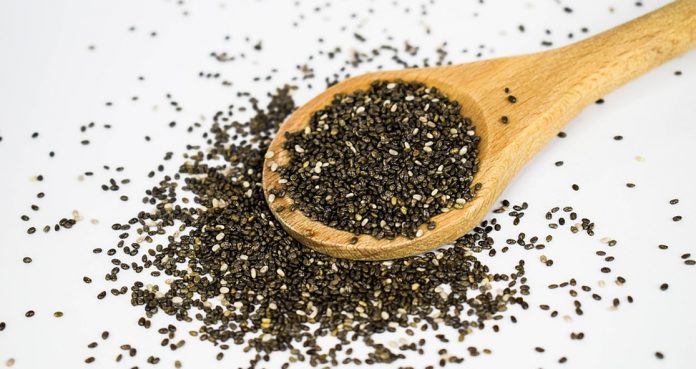Type 2 diabetes is one of the most common conditions characterized by hyperglycemia, meaning high blood glucose (sugar) levels.
The triggering symptoms of type 2 diabetes include polyphagia (increased appetite), polydipsia (increased thirst), and polyuria (increased urination). If left untreated, type 2 diabetes can cause serious health issues, such as cardiovascular disease, stroke, nerve damage, and kidney damage.
Making simple lifestyle changes can help prevent the condition and keep your blood sugars levels under control. In fact, certain foods are found to be effective at lowering blood sugar and keep it under control, including a superfood native to Central America – chia seeds.
Chia seeds are small, black oval-shaped seeds with a diameter of one millimeter.
In recent years, chia seeds are considered a superfood because of their high antioxidant effects and omega-3 content. Also, they are a good plant-based source of protein and fiber.
According to a 2017 study, overweight people with type 2 diabetes lost more weight within six months of including chia seeds in their diet than those who ate oat bran. Researchers found that weight loss could be beneficial for people with type 2 diabetes and chia seeds are a good choice in doing so.
Animal studies have found that chia seeds may improve insulin sensitivity and blood glucose control, controlling blood sugar levels after meals.
In fact, some human studies have supported this idea. They found that eating bread with chia seeds lowered the post-meal spike in blood sugar level when compared with bread that did not include chia seeds.
One can include chia seeds in smoothies, breakfast cereals, and salads.
However, if you have been diagnosed with type 2 diabetes, it is imperative to speak to your doctor or nutritionist before including chia seeds in your diet.
Apart from making changes in your diet, it is important to be physically active to keep your blood sugar levels under control.
The National Health Service (NHS) has said that physical activity helps reduce blood sugar level, and one should exercise for at least 2.5 hours a week. The NHS says, “You can be active anywhere so long as what you’re doing gets you out of breath. This could be fast walking, climbing stairs or doing more strenuous housework or gardening.”























